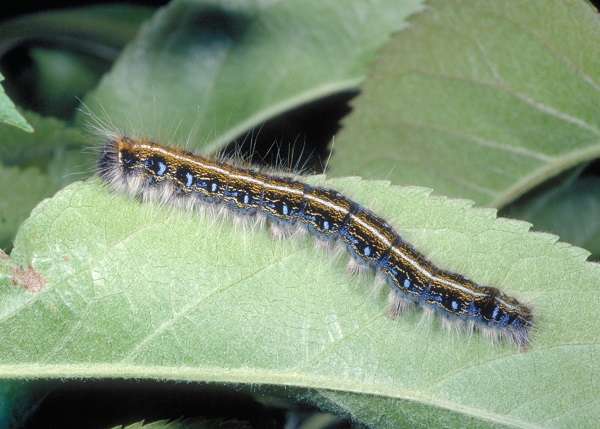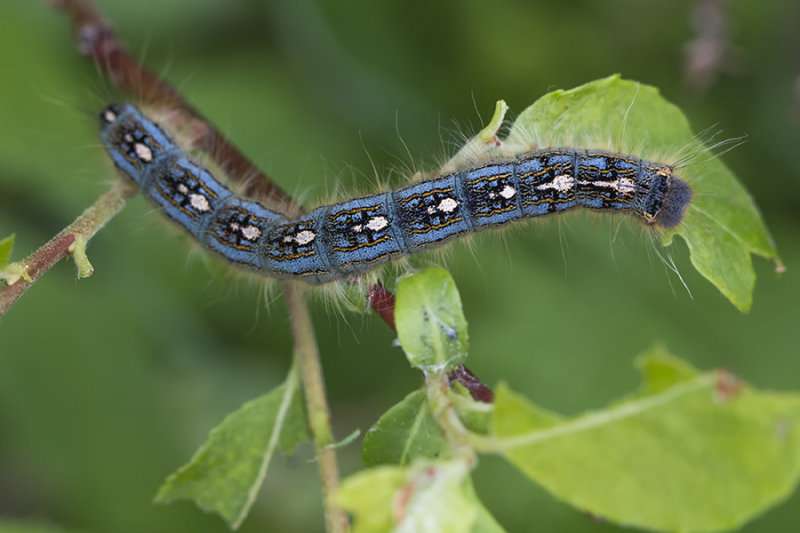SCORES & OUTDOORS: It’s caterpillar season in Maine
 by Roland D. Hallee
by Roland D. Hallee
Spring has arrived in Maine, and with it, the Maine Forest Service and others have been fielding caterpillar questions. Caterpillars are essential food for many other animals, including insects, birds, mammals, and even fish! However, sometimes caterpillars from our trees and shrubs become nuisances around our homes and workplaces, and outbreak populations can threaten tree health. The caterpillars of forest tent, eastern tent and browntail moths are beginning to make their presence known.
The Maine Department of Agriculture, Conservation and Forestry urges you to take a responsible approach to living with the caterpillars in your developed landscape and avoid causing unnecessary harm to the environment and human health.
Remember that caterpillars play an important role in the environment; what you consider a pest may be someone else’s meal.
Consider no-action as a valid strategy. Sometimes, it is the most reasonable approach, but often, there are small steps you can take to reduce impacts.
If populations are unbearable or threaten a high-value ornamental tree’s health, correctly identify the caterpillar and begin with the least-toxic approach.
It is against the law to apply pesticides in ways that do not comply with label directions. Improper pesticide use can threaten human and environmental health.
The Maine Board of Pesticide Control does not recommend home-remedy pesticides. In some cases, they are illegal.
What follows are some less toxic approaches to managing tent caterpillars.
Eastern Tent Caterpillar
This is a native caterpillar that feeds on fruit trees and shrubs (Rose family species such as cherries, apples, serviceberries, and hawthorns). It can strip ornamental and fruit trees but it is not a significant forest or human health threat in Maine. If you see them in a tree that you don’t want them to remain in throughout their caterpillar season you can:
Remove unhatched egg masses. This only will apply in cooler spots in the coldest areas of the state. We have already seen the start of eastern tent caterpillar hatch all the way to northern Aroostook County this year. Next winter, consider scouting these trees for egg masses so you can remove those prior to hatch.
Strip young colonies of caterpillars from branches within reach using gloved fingers.
Relocate developing nests to a woodland fruit tree like a black cherry or serviceberry. If you remove the twig it is on, sanitize pruning tools before use and between cuts. These caterpillars host some generalist predators and parasitoids that can help reduce other caterpillar populations.
Remove and destroy the nest. You can strip them off using your hands, or, with larger nests, put a forked twig or pole with a nail into the web, twist it, then pull the nest off. Done in the early morning or on a rainy day, you will remove most of the caterpillars that use the nest.
Forest Tent Caterpillar
This is a native caterpillar that has boom and bust population cycles. Parts of Aroostook County have had several years of high populations of this insect, with caterpillars especially abundant on aspen species and also feeding on other hardwood trees and shrubs.
It is important to know that hardwood trees can tolerate a couple of years of severe defoliation before showing long-term health impacts, assuming other stresses, like drought, are not present. As a native species, this caterpillar provides important food for other species, including enemies of other insect pests.
On small, ornamental trees and shrubs, the egg masses can be removed by hand and destroyed. Note that hatch has started in northern Aroostook County and will take place over several days.
Young colonies of caterpillars can be removed from branch tips or squashed while they rest on the main stem, especially in the evening or on cool days.
In larger established landscapes experiencing their first year of defoliation, healthy trees will pull through. If this will be beyond the second year, you expect more than a third of the leaves to be consumed, you may want to consider insecticide treatment. We recommend working with a licensed pesticide applicator to treat established ornamental trees. They may use a foliar application of insecticide or a systemic treatment. If applied early enough in the life cycle, BtK, an active ingredient that has action specifically against caterpillars, can be used. It must be applied to the leaves of trees that young caterpillars are actively feeding on to be effective.
Be aware that the period of wandering caterpillars is short. Sometimes, just waiting them out is the most practical solution. If caterpillars are a nuisance around the home, they can be washed from hard surfaces like decks and siding with a strong stream of water or brushed off with a stiff-bristled broom. Where possible, follow that by removing them using a wet canister shop vac. A shop vac with a couple of inches of water in the canister can also be used to remove caterpillars from hard surfaces within reach. A couple of drops of soap added to the water will break surface tension and allow the water to suffocate the caterpillars. Be aware if you don’t clean them up, they may just climb right back where they were.
Cocoons on siding and other surfaces may be removed by a stiff-bristled broom. Test this approach in a small area first to see if the surface can withstand the treatment.
Browntail Moth
This non-native species is also in an epidemic population stage in parts of Maine. Because the hairs on the caterpillar have human health impacts, if you choose to remove caterpillars, be sure to do so only after taking precautions to prevent exposure. Our website has detailed management tips for browntail moth. You can also subscribe to our browntail moth updates for more details on this insect.
Responsible journalism is hard work!
It is also expensive!
If you enjoy reading The Town Line and the good news we bring you each week, would you consider a donation to help us continue the work we’re doing?
The Town Line is a 501(c)(3) nonprofit private foundation, and all donations are tax deductible under the Internal Revenue Service code.
To help, please visit our online donation page or mail a check payable to The Town Line, PO Box 89, South China, ME 04358. Your contribution is appreciated!





Leave a Reply
Want to join the discussion?Feel free to contribute!